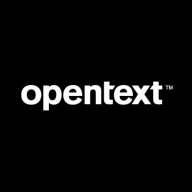![AWS Server Migration Service [EOL] Logo](https://images.peerspot.com/image/upload/c_scale,dpr_3.0,f_auto,q_100,w_64/ecwtjjlwilx2g4qujp0d5nz7cwsn.jpg?_a=BACAGSDL)

OpenText Migrate and AWS Server Migration Service are competing products in cloud data migration. OpenText Migrate stands out in customer support and pricing, while AWS Server Migration Service offers robust features.
Features: OpenText Migrate provides automation and scalability, ensuring efficient data migration. It is recognized for its operational efficiency and quick implementation. AWS Server Migration Service offers seamless integration with AWS infrastructure, leveraging existing ecosystem capabilities. Its advanced feature set focuses on deep integration, providing significant long-term benefits.
Ease of Deployment and Customer Service: OpenText Migrate has a straightforward deployment model, often appreciated for fast implementation and strong support services. AWS Server Migration Service benefits from AWS's extensive support network, with a more complex setup process due to its comprehensive feature offering.
Pricing and ROI: OpenText Migrate is known for lower setup costs and faster ROI, reflecting its cost-effectiveness. AWS Server Migration Service, while potentially higher in initial investment, is considered valuable for those prioritizing ecosystem compatibility and advanced functionalities, offering significant long-term benefits.

AWS Server Migration Service (SMS) is an agentless service which makes it easier and faster for you to migrate thousands of on-premises workloads to AWS. AWS SMS allows you to automate, schedule, and track incremental replications of live server volumes, making it easier for you to coordinate large-scale server migrations.
OpenText Migrate provides a robust and efficient way to transition workloads and applications across different environments, ensuring business continuity and seamless operation in complex IT infrastructures.
OpenText Migrate simplifies the process of moving servers and applications, offering an adaptable and efficient platform that minimizes downtime and maintains data integrity during transfers. It caters to varied migrations, whether on-premise, between data centers, or to cloud environments, supporting the rapid pacing of digital transformation.
What are the key features of OpenText Migrate?OpenText Migrate implementations are versatile, adept at supporting industries like finance, healthcare, and manufacturing where IT resilience is critical. Its ability to accommodate diverse migration needs allows sectors to maintain productivity and enhance performance with minimal disruption.
We monitor all Cloud Migration reviews to prevent fraudulent reviews and keep review quality high. We do not post reviews by company employees or direct competitors. We validate each review for authenticity via cross-reference with LinkedIn, and personal follow-up with the reviewer when necessary.